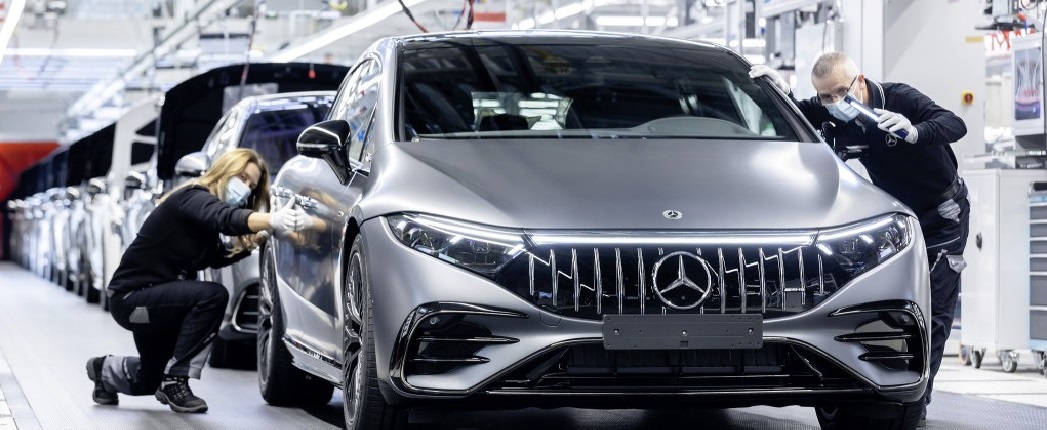
Stellantis and Mercedes-Benz, two of the world’s largest automotive companies, recently announced billions in investments in electric vehicle assembly plants and in development of EV safety and testing.
Stellantis also proposed a new open forum for lobbying, discussion and opinion-sharing in the European automotive sector.
Mercedes-Benz said it will invest U.S. $2 billion in its European assembly plants to upgrade them for the shift to electric cars by the end of the decade. The traditional automobile company, based in Germany, hopes to gain a competitive advantage over other 21st–century automakers, like Tesla, in the transition toward electric mobility.
The production of vehicles on new electric platforms is planned to begin in 2025.
The company’s German plants in Sindelfingen, Bremen, Rastatt and the plant in Kecskemét, Hungary, will start producing the new electric models in the top end luxury, core luxury and entry luxury segments from the middle of the decade, Mercedes said in a news release. Last year, the carmaker announced that Mercedes intends to introduce only electric platforms from 2025 onward. This is unwelcome news for its factory fill suppliers.
The expected distribution among the plants has also been determined. The Sindelfingen plant is the lead plant for top end luxury and will produce models on the electric platform AMG.EA from 2025. The Bremen and Kecskemét plants will produce models on the e-platform MB.EA – the core luxury models – and the Rastatt and Kecskemét plants will build the repositioned models platform MMA from 2024.
Stellantis, a 50-50 joint venture between Fiat Chrysler Automobiles and Peugeot S.A., recently announced a U.S. $34.7 million investment to develop its global engineering testing facilities.
The company intends the investment to support the electrified vehicle segment. Also, it helps advance the company’s goals of reducing carbon emissions by 50% from 2021 levels by the end of the decade and of reaching net-zero carbon emissions by 2038.
The money will go toward the company’s wind tunnel complex in Auburn Hills, Mich., and the Orbassano Safety Center near Turin, Italy.
The wind tunnel’s upgrades, worth $29.5 million, include a rolling road, which will simulate on-road travel and provide accurate aerodynamic measurements of vehicles. The testing of aerodynamic efficiency helps to optimize the distances electrified vehicles can travel on a single charge.
The approximately $5 million allocated to the safety center will allow the facility to crash test plug-in hybrid, mild hybrid and battery electric vehicles on four tracks with four impact points. This year, the company plans to test more than 275 electrified vehicles at the site.
“Our tech hubs are doing the work today that will make tomorrow’s vehicles industry leaders in capability, performance and safety,” Stellantis CEO Harald Wester said in a press release.
In early June, Stellantis announced it would leave the European Automobile Manufacturers’ Association (ACEA) by the end of 2022 “as part of a new approach to addressing issues and challenges of future mobility, including a shift away from traditional lobbying activity.” ACEA has been the industry’s main lobbying group since its creation in 1991, uniting Europe’s 16 major car, truck, van and bus makers.
Stellantis said it had launched what it calls the Freedom of Mobility Forum, a public space for various actors related to the issue “to share and confront their thoughts on a 360-degree and fact-based approach.”
The forum is initially planned for early 2023, Stellantis added.

Sorry, a technical error occurred and we were unable to log you into your account. We have emailed the problem to our team, and they are looking into the matter. You can reach us at cs@lubesngreases.com.
Click here link to homepage